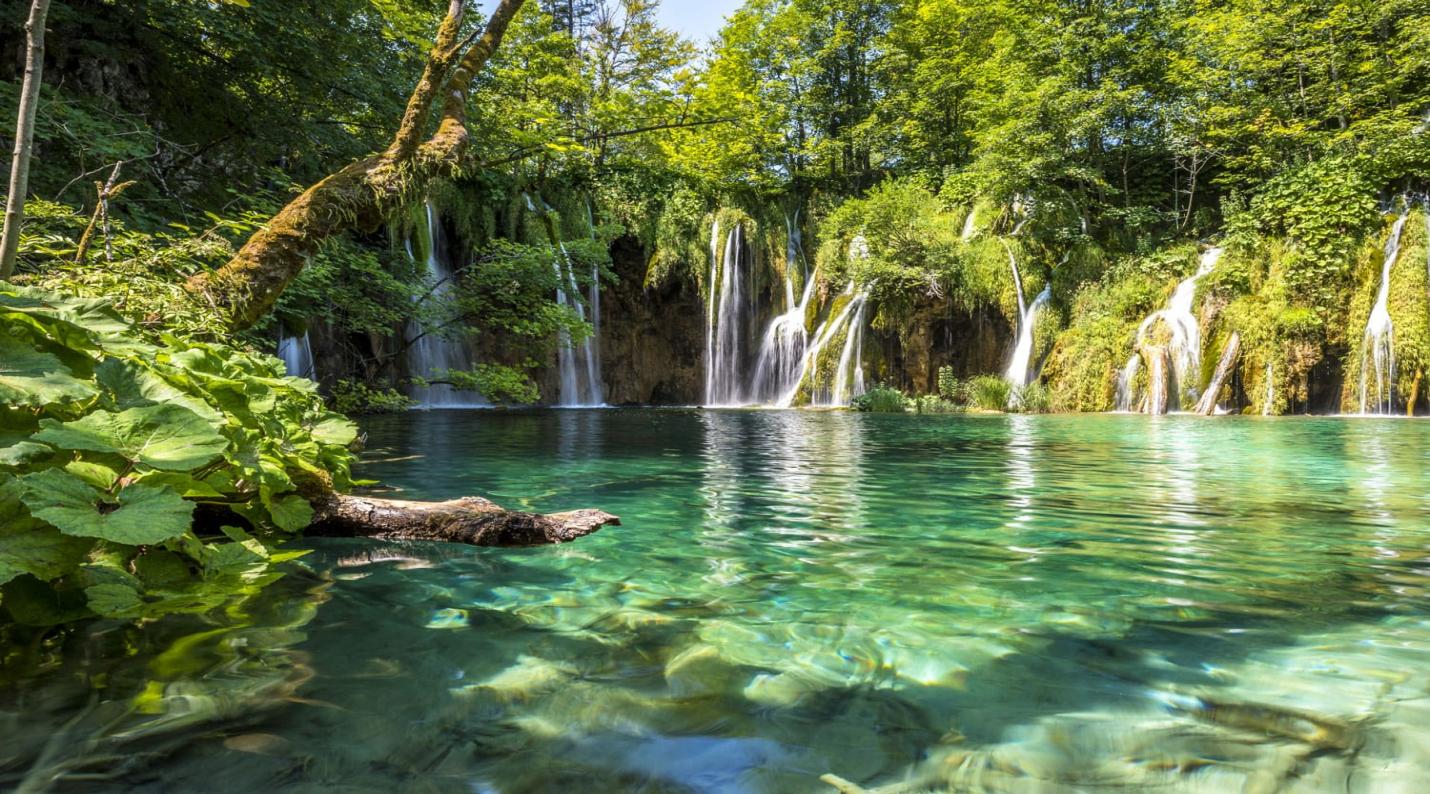Travelling to a UNESCO World Heritage Site is an excellent idea if you are still deciding about your next destination. More than a thousand can be found in every corner of the world. These are some of the best European destinations to spend your entire holiday. However, the continent has unique cities, architecture, monuments, mountains, woods, and other natural wonders.
National Park of Plitvice Lakes
Once a hidden gem, Plitvice Lakes National Park is now well-known because of the widespread distribution of photographs taken there. In addition to being one of Europe's most stunning natural areas, the park is also home to sixteen shimmering lakes of various green and turquoise hues.
Stunning waterfalls, rivers, and caverns were formed with the help of natural dams formed by the water's flow through the limestone and chalk over thousands of years. Visitors may get up and personalize with one of Croatia's most magnificent natural sites by strolling along wooden pathways and across bridges.

Acropolis, Greece
The Acropolis is a UNESCO World Heritage Site and a major tourist destination in Athens. It includes the remains of several ancient buildings, a theatre, a temple dedicated to the goddess Athena, and the most well-known of them, the Parthenon.
If you want to avoid the crowds, the ideal time to visit is either first thing in the morning when the gates open at 8 a.m. or late in the afternoon after the tour groups have all left. Many relics were discovered here, and you may see them at the new Acropolis Museum.
England's Stonehenge
Stonehenge is the most well-known stone circle in the world and a major tourist destination in the United Kingdom. Located on top of Salisbury Hill, this prehistoric monument has been a UNESCO World Heritage site since 1986.
Its gigantic, 40-ton stone was transported kilometres across the desolate plain to reach the site. Since it is protected by fencing and hence inaccessible to the general public, the best way to see it is to sign up for a Special Access Tour and get entry to the restricted area. Also, remember to check out some of the incredible local sights.

The Northern Irish Giant's Causeway
This UNESCO World Heritage Site in Northern Ireland is known as the Giant's Causeway because of the 40,000 interlocking basalt columns that make up the pathway, which resembles Legos or a path suitable for a giant.
There is a theory that it originated from a route that giants used between Ireland and Scotland. A volcanic explosion occurred approximately 50–60 million years ago, and the resulting molten lava cooled into the present form.
France's Mont-Saint-Michel in Normandy
Mont-Saint-Michel is a Normandy monastery erected in the Gothic style between the 11th and 16th centuries on a rocky tidal island approximately two-thirds of a mile off the shore. Strong and frequently shifting tides have isolated the island from the mainland for centuries, although it was formerly utilized as a centre of Gall-Roman culture and power. At low tide, you may photograph the abbey from the mudflats of the harbour, which is especially beautiful at sunset.
Mostar, Bosnia-Herzegovina
Photographers and outdoor enthusiasts will find Old Mostar's medieval village a paradise. Once a thriving Ottoman frontier town in the 15th and 16th centuries and an Austro-Hungarian stronghold in the 19th and 20th, the city's iconic Stari Most bridge—from which boys on the cusp of manhood would dive—was destroyed in the conflict of the 1990s but has since been restored to its former glory.
The Alhambra in Granada, Spain
During the Moorish rule of Spain, the city of Albany and the famous Alhambra palace were built. Set on two nearby hills, the medieval quarter of Granada comprises a palace, castle, fortress, summer resort, and enclosed town.
One of the finest examples of Nasrid decorative and architectural art, and the only palatine city from the Islamic period that has survived to the present day.
Due to its status as one of Spain's top tourist destinations, reservations are highly recommended if you want to spend a fascinating day wandering the city's peaceful courtyards, royal rooms, and spectacular Moorish and Renaissance castles.
Diocletian's Palace, Split, Croatia
In the fourth century AD, Roman Emperor Diocletian constructed a retirement palace in Split. Diocletian's Palace is now a sprawling complex that takes up almost the whole historic district.
The "Palace" was both the imperial residence and a military stronghold, taking the form of a massive fortification. The former barracks of Diocletian's troops are now home to intriguing stores, busy markets, cafés, bars, and exquisite residences and may be found along the marble streets.

Sean William Aug 28, 2023
Fascinating Cave Dwellings In The World

Juliana Daniel Aug 28, 2023
5 The Best Honeymoon Destinations In 2023: A Complete Guide

Juliana Daniel Dec 26, 2022
Top 6 Attractions and Activities in Barcelona's Gothic Quarter

Juliana Daniel Jan 03, 2023
Top Attractions In Asheville, North Carolina

Juliana Daniel Aug 28, 2023
6 Most Beautiful Regions In Croatia

Juliana Daniel Dec 25, 2022
Weekend In St. Helena, Napa Valley: A Guide

Sean William Dec 26, 2022
Unique Perspectives On Gaud's Barcelona

Sean William Jan 04, 2023